This is a follow up to this question: determine the coordinates where two pandas time series cross, and how many times the time series cross
I have 2 series in my Pandas dataframe, and would like to know where they intersect.
A B
0 1 0.5
1 2 3.0
2 3 1.0
3 4 1.0
4 5 6.0
With this code, we can create a third column that will contain True everytime the two series intersect:
df['difference'] = df.A - df.B
df['cross'] = np.sign(df.difference.shift(1))!=np.sign(df.difference)
np.sum(df.cross)-1
Now, instead of a simple True or False, I would to know in which direction the intersection took place. For example: from 1 to 2, it intersected upwards, from 2 to 3 downwards, from 3 to 4 no intersections, from 4 to 5 upwards.
A B Cross_direction
0 1 0.5 None
1 2 3.0 Upwards
2 3 1.0 Downwards
3 4 1.0 None
4 5 6.0 Upwards
In pseudo-code, it should be like this:
cross_directions = [none, none, ... * series size]
for item in df['difference']:
if item > 0 and next_item < 0:
cross_directions.append("up")
elif item < 0 and next_item > 0:
cross_directions.append("down")
The problem is that next_item is unavailable with this syntax (we obtain that in the original syntax using .shift(1)) and that it takes a lot of code.
Should I look into implementing the code above using something that can group the loop by 2 items at a time? Or is there a simpler and more elegant solution like the one from the previous question?
